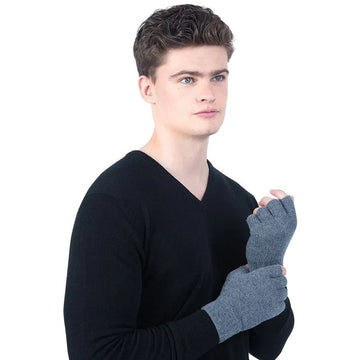Much like how people around the world have been drawn to the softness and luxurious warmth of cashmere clothing, the rare natural material has also revolutionised and reshaped several industries throughout the world.
One of the most famous motifs of Kashmir shawls, the buta, is named the Paisley pattern after the Scottish town that brought cashmere to wider British society.
However, one part of the story that is often missed or glossed over is how the industrial knowledge to spin and make clothes from cashmere reached Scotland in the first place.
The answer, it turns out, involves a former naval officer and failed copper miner who would spend several years pretending to be a Spanish minstrel before setting the spinning wheels in motion to make Scotland a centre for cashmere.
The Very Model Of A Modern Major General
Born in 1796 as the second son of Admiral Sir Alexander Cochrane, much of Captain Charles Stuart Cochrane was spent at sea alongside his father and his five brothers, even being born on HMS Thetis.
After taking part in the latter part of the Napoleonic Wars as a teenager, Charles Cochrane would reach the rank of full admiral in 1819 at the age of just 23, holding the office of Commander-in-Chief until 1824.
Around this time, he would plan a lengthy voyage up the Magdalena River, the main river that flows through west Columbia, which became the subject of a journal.
The plan was to mine for copper in the region, but this did not ultimately pan out for several reasons, and by 1828, Charles was back in England, and his next endeavour would take everyone by surprise.
The Spanish Minstrel
For an entire year, Charles would not go by his official name and rank but instead adopted the pseudonym Señor Juan de Vega, a Spanish minstrel who would travel across England, Scotland and Wales, before finally revealing himself in Edinburgh and publishing a journal of his exploits.
He made £58 during a somewhat comical journey, which was donated to charities supporting Portuguese refugees, and received many other gifts such as clothes, purses and board at varying points of the journey.
This journey’s end, however, would put him in the perfect position to change the history of luxury clothing.
Spinning Another Yarn
By 1830, cashmere was already being weaved in Scotland, using yarn that had been processed and imported from France. However, political tensions that led to the July Revolution of 1830 threw this careful agreement into flux.
Sensing that cashmere supplies could potentially stop entirely depending on if (or more likely when) there was another uprising, Scottish industrialists were looking for a way they could cut out France and spin cashmere themselves.
The Scottish Board of Trustees for the Encouragement of Arts and Manufacturers led the way, offering £300 (£27,000 adjusted for inflation) to the first person who used the French system to spin cashmere in Scotland.
This led to another adventure for Charles Cochrane, and by 1831 he had a Scottish patent for the process, which he dutifully sold to textile manufacturer Henry Houldsworth & Sons.
They would receive the reward in 1833, but at some point around this time Charles Cochrane died without seeing just how successful and popular cashmere would get.














